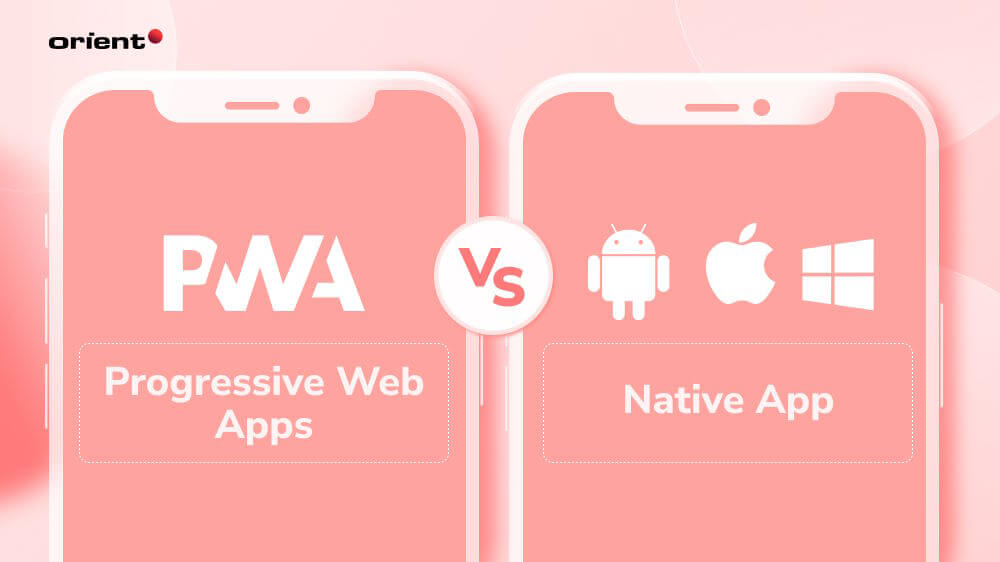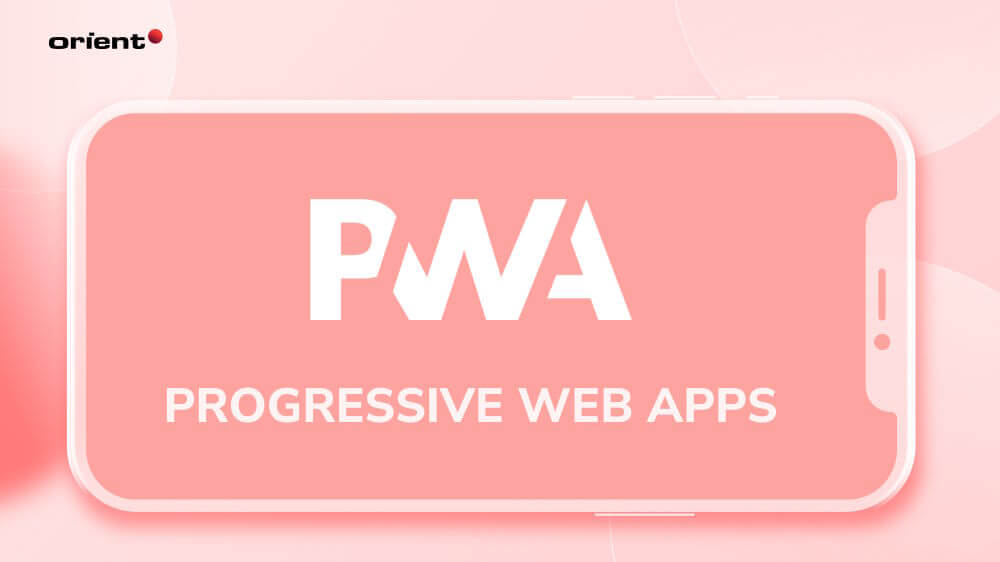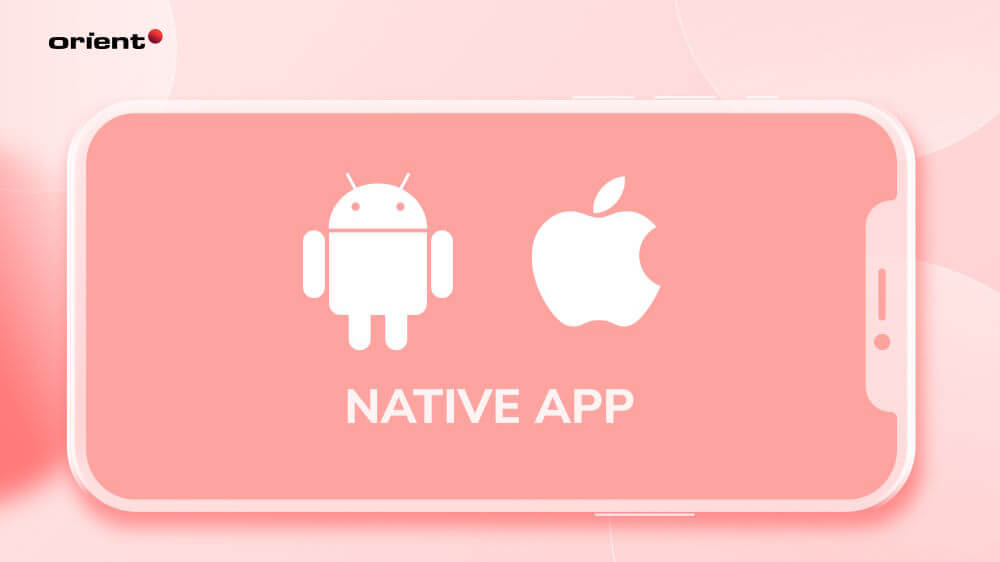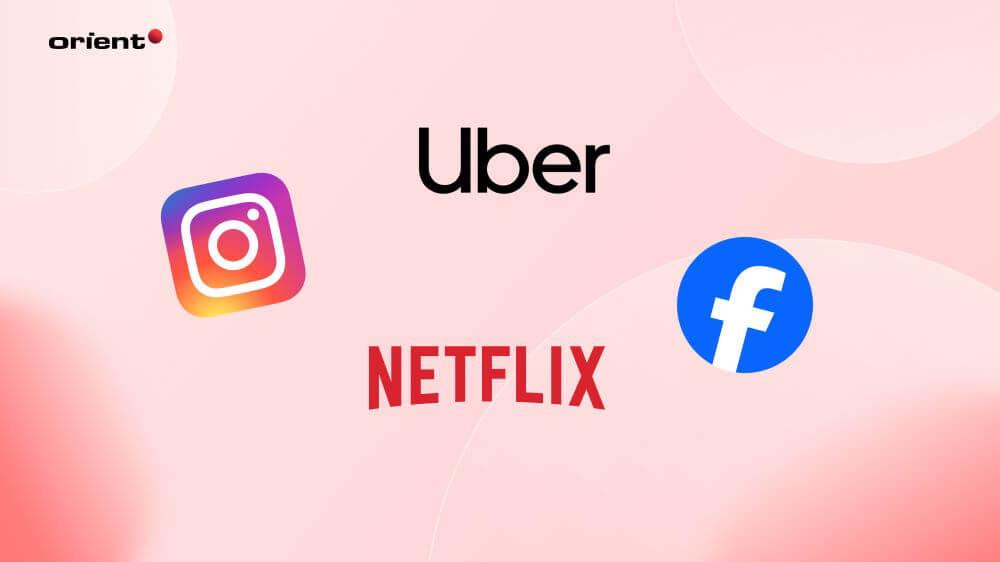PWA vs. Native App: Is Progressive Web App Better Than Native App?

Content Map
More chaptersThe rise of mobile devices is so apparent that developing mobile apps is no longer an option but a must for businesses of all sizes, enabling them to capitalize on growth opportunities and cultivate user engagement.
In the past, companies only had two options when it came to mobile app development: creating a traditional website and developing a native app. Today, they have a third choice called progressive web app - a type of web application that combines the features of both native mobile apps and traditional websites. As websites often face performance challenges and security concerns, businesses often tend to choose between PWA vs. native apps rather than consider all three choices.
If you are in the middle of nowhere in the journey of software development, we are here to help. By reading to the end of this topic, you may make the final decision for the upcoming project.
The Definition of Progressive Web Apps (PWAs)

Progressive Web Apps (PWAs) are flexible web applications that combine the best aspects of both websites and mobile applications. By utilizing modern web technologies, including JavaScript, WebAssembly, HTML5, and CSS, PWAs provide users with a native app-like experience directly through a web browser.
Using PWAs is very simple. Similar to traditional websites, each progressive web app has its own URL. Users just need to access the desired URL from any kind of device, and the URL will lead them straight to the progressive web app without downloading anything from app stores.
Users, of course, need an active Internet connection to access all the features of the PWA. However, PWAs still support visitors in displaying previously loaded pages, data, and functionalities under limited or no network conditions. This is achieved by a technology called “service workers,” which has the ability to store cached data locally on the user’s device when the app is first loaded or when an Internet connection is available.
With a high level of performance, convenience, and flexibility, progressive web apps are increasingly popular with businesses seeking to improve brand awareness and user engagement.
The Pros and Cons of a Progressive Web App
Pros of PWAs
Cross-Platform Compatibility: This is one of the key advantages of progressive web apps, which sets them apart from traditional websites and native apps. PWAs are capable of running on any web browser regardless of the device type or operating system. Regardless of whether users are on a laptop, desktop, tablet, or smartphone, they can all open a PWA by simply accessing the URL, eliminating the need to install the app from app stores. This versability helps PWAs reach a wider audience across different platforms without the need to invest in separate development efforts.
Offline Functionality: As mentioned before, PWAs support users in accessing certain content and features on previously loaded pages even without an Internet connection. This offline usability is made thanks to the use of service workers, which are scripts running in the app’s background to cache data, resources, and assets for offline use. By providing a seamless web app experience, PWAs are especially suitable for individuals who may work in environments with limited network conditions.
Search Engine Optimization (SEO) Benefits: By requiring users to visit a certain URL to open the app, PWAs can be easily crawled and indexed by search engine bots due to their web-based nature. This SEO benefit makes PWAs an optimal choice for better visibility in search results, driving traffic and conversions.
Low Data Consumption: PWAs take up less space on a device due to the ability to optimize data consumption. With the help of service workers to cache resources locally on the user’s device, PWAs store frequently access data offline without repeating the data download process. Instead of reloading the entire page after the user revisits the app, PWAs fetch only the necessary updates or changes, minimizing data transfer without compromising the app quality.
Lower Development Cost and Faster Time-to-Market: Without the need for double efforts on separate development processes, PWAs allow developers to write a single codebase and use it across multiple operating systems, including iOS, Android, etc. This not only shortens product completion time, eliminating the app store submission process but also minimizes resource usage, further leading to cost savings and shortening time to market.
Cons of PWAs
No App Store Visibility: As users can only access PWAs through search engines on web browsers such as Chrome or Safari, PWAs are considered web apps with lower app store visibility compared to native apps. While businesses using PWAs can reach users through search engines and direct links, not being present in app stores makes them lose out on potential customers who are in the habit of searching for apps within the Apple App Store and Google Play Store.
Limited Native Device Features: Although a blend of mobile applications and website advantages, PWAs cannot access some native features such as Bluetooth and advanced sensors, functionalities that rely on real-time updates, and augmented reality or motion-based interactions. Having many limitations on features makes it difficult for PWAs to reach users in certain scenarios.
Security Concerns: While PWAs follow secure web practices, they are still susceptible to network-related security risks such as data interception, cross-site scripting (XSS), and man-in-the-middle attacks due to their web-based nature.
Examples of PWAs
- Twitter Lite: Twitter Lite is a PWA version of the popular social media platform that aims to provide a more lightweight design and faster experience for users with limited connectivity. With significant improvements, Twitter Lite now generates more than ten million push notifications per day.
- Flipkart: Flipkart is considered one of the biggest e-commerce platforms in India. To enhance the shopping experience for mobile users, Flipkart released a PWA with offline capabilities, high performance, and seamless navigation, leading to longer customer on-page time and higher retention and conversion rates.
- Trivago: Trivago’s PWA is designed to help travelers find suitable accommodations and compare hot deals without downloading apps from app stores. By providing a web-app booking experience, Trivago helps users feel secure when doing financial transactions and submitting personal information compared to a traditional website.
- Forbes: Forbes launched its own PWA with faster performance to improve user churn rate caused by long website loading time. Now, accessing rich content sources becomes much easier with features like push notifications for breaking news and offline access to saved articles.
All about Native App Development

The Definition of Native Mobile Apps
Mobile applications that you download from app stores like the Apple App Store and Google Play Store are good examples of native apps. To be more specific, native apps are mobile applications developed and designed specifically for operating systems such as iOS and Android. The process of developing native apps for particular platforms requires the use of different platform-specific languages. For example, while developers use Swift or Objective-C for iOS development, they leverage Java or Kotlin for Android development for the same app.
Native apps require users to install apps from official app stores on their own mobile devices so they can use them as they please. While separated development efforts on each platform may potentially lead to higher development costs and longer time-to-market, native apps offer a comprehensive user experience and are a popular choice for businesses looking for top-quality mobile apps.
The Pros and Cons of a Native Mobile App
Pros of Native Apps
Optimized Performance for Each Platform: By customized to meet the unique requirements of each platform, native apps are able to fully leverage the software capabilities and directly interact with the underlying hardware of the device, such as sensors, cameras, GPS, and processors. This straightforward communication allows native apps to deliver smooth animations and rapid response times, making them the ideal choice for systems where speed and efficiency are paramount.
Enhanced User Experience: Different platforms provide different user interfaces even in the same app. Users on this platform are often only used to using this mobile-specific interface and vice versa. As native apps require developers to design according to each platform’s design guidelines and standards, such as Human Interface Guidelines for iOS and Material Design for Android, users access the exact interface they want, leading to a more intuitive and engaging interaction.
Access to Device Features: Not only does it interact seamlessly with hardware components to provide advanced features like real-time data processing and augmented reality (AR), but native apps also have the ability to integrate with platform-specific APIs to implement biometric authentication and in-app purchases, ultimately delivers mobile apps with rich features and functionality.
Better Security: Before being published, native apps must undergo a thorough process of security checks, compliance assessments, and code reviews to ensure they fully meet security conditions. Leveraging secure storage APIs and encryption protocols provided by the platform helps native apps effectively mitigate cybersecurity risks such as unauthorized access or data suppression.
Cons of Native Apps
Higher Development Costs: While on PWAs, you only need to develop the application once and use a single codebase for every access device; native apps require developers to duplicate such processes and create separate codebases for each platform. This means it costs companies twice as much to invest in resources and recruit developers with specialized expertise and skills.
Longer Development Time: Instead of using the same user interface components, programming languages, and codebase for all platforms, native apps require developers to implement and design separately for each operating system. Separated development efforts obviously lead to longer development time. The process of testing and optimizing compatibility across different OS versions and devices also contributes to extended development durations.
Maintenance Challenges: As new OS updates are introduced, developers must ensure that the existing app remains compatible and bug-free. To complete such tasks, the development team must conduct independent checkups for each platform. Updated app store guidelines, submissions, and reviews from time to time also hinder and add complexity to maintenance processes.
App Store Approval Process: Developing native mobile apps entails navigating approvals from the Apple App Store or Google Play Store. This process usually takes a certain amount of time for app stores to review and evaluate the application and whether it fully meets legal and quality requirements before publishing it to users. There are many cases where native apps do not ensure platform-specific guidelines and policies, resulting in rejection, delays, or even removal from the app store. This puts businesses in a passive position and somewhat affects product launch plans.
Limited Reach: The limited reach of native apps stems from various factors. As specifically designed to provide a comprehensive user experience, native apps for iOS only attract potential customers on this platform and vice versa. This platform exclusivity creates a barrier for businesses to reach a broader user base. Some other aspects, such as competition within app stores, heavy reliance on App Store Optimization (ASO), and installation challenges due to lack of storage spaces, also contribute to difficulties in reaching new users and target markets.
Examples of Native Apps

- Instagram: Instagram started as a web-based platform allowing users to share photos and connect with socials. By adopting native app development, Instagram improves user experience with a variety of mobile functionality and quickly attracts user attention on iOS and Android.
- Uber: As a platform for booking global rides and local deliveries, Uber revolutionized the transportation industry by creating separate mobile apps for both iOS and Android operating systems, providing users with real-time ride tracking, payment integration, and geolocation services for convenience.
- Facebook: Facebook is one of the most popular social platforms in the world. With the launch of native mobile apps, Facebook expanded its reach, enabling users to enhance their experience with a series of new features only available on iOS and Android.
- Netflix: Like other native apps, Netflix also comes from a subscription-based streaming service on desktop browsers. By introducing native apps with the ability to personalize user experience, Netflix quickly expanded its user base and became the leader in the mobile video streaming industry.
Navigating the Differences Between Progressive Web Apps vs. Native Apps
PWAs and native apps have quite obvious differences if you look closely at the pros and cons presented above. However, to make things clearer, we have provided you with a comparison table between PWAs vs. native apps. Let’s take a look.
| Aspect | Progressive Web Apps (PWAs) | Native Apps |
|---|---|---|
| App Store Distribution | Not distributed through app stores | Available for downloading on app stores |
| Accessibility | Platform independent | Platform specific |
| Device Features | Limited access to device hardware | Full access to device features |
| Offline Functionality | Limited offline functionality | Extensive offline capabilities |
| Discovery | Search engine visibility | App store visibility |
| Updates | Automatically update without user intervention | Require manual updates |
| Development Cost | More budget-friendly | Higher development and maintenance costs |
| User Experience | App-like experience but may vary | Premium user experience |
| Storage | Limited local storage capabilities | Greater access to device storage |
| Customizability | Limited customization choices | High level of user personalization |
| Time to Market | Better time-to-market | Extended development durations |
| Development Resources | Requires web development expertise | Requires platform-specific development skills |
| Use Cases | News and media outlets E-commerce platforms Travel and tourism apps Weather apps Online learning platforms | Gaming apps Social platforms Fitness and health apps Banking and finance apps Productivity tools |
Whatever you choose, your advice is to make your choice based on your industry knowledge and understanding of your own organization, not some general formula from famous businesses. It is careful planning and assessment of project requirements, timelines, and resources that will open the door to success.
In this competitive market, time is gold. If you are harboring a great business idea, it is better to start it now. By contacting a reliable outsourcing partner like Orient Software, you shorten recruitment time, have direct access to the highly qualified developer pool, and accelerate the development process while ensuring quality.







